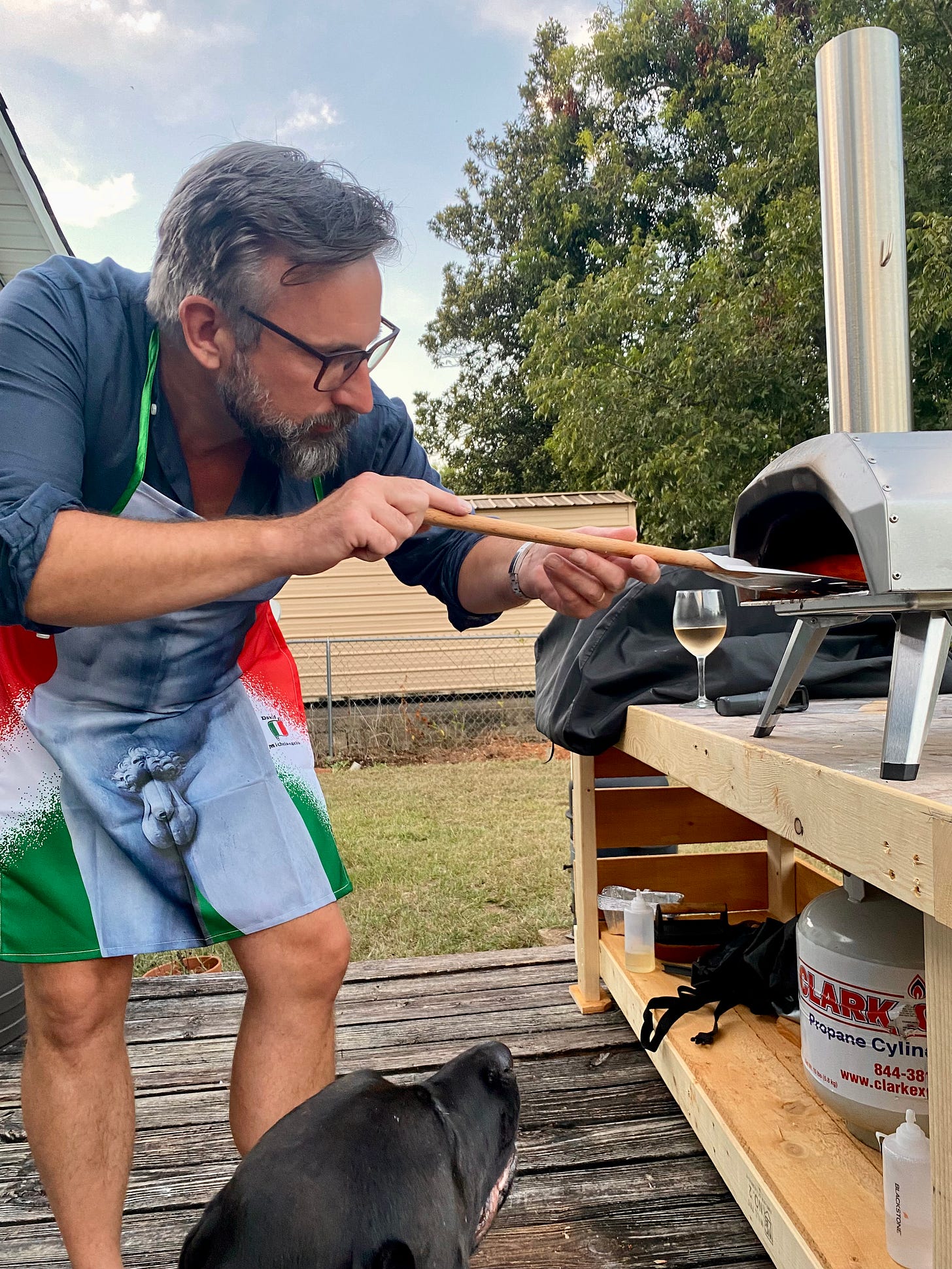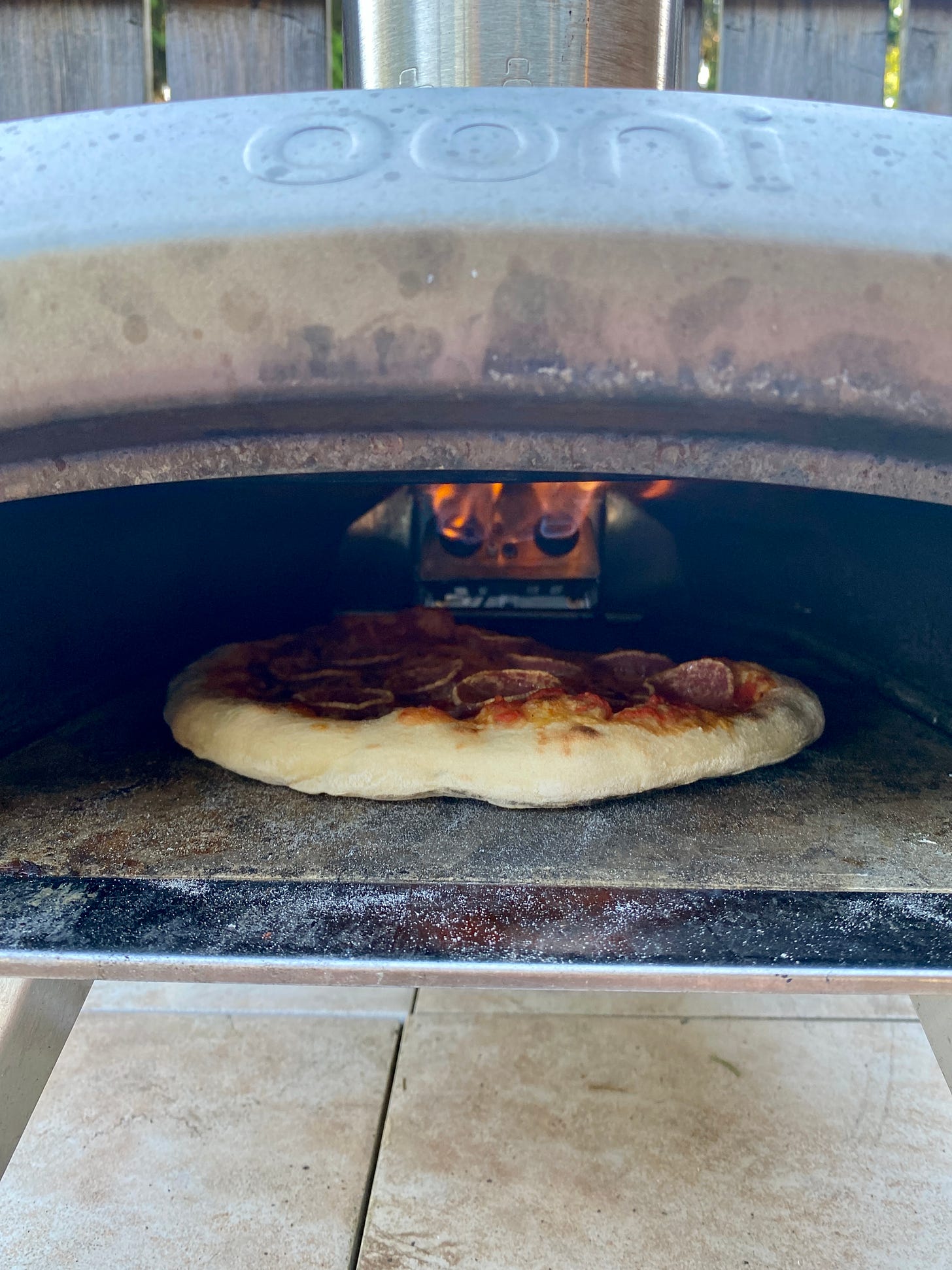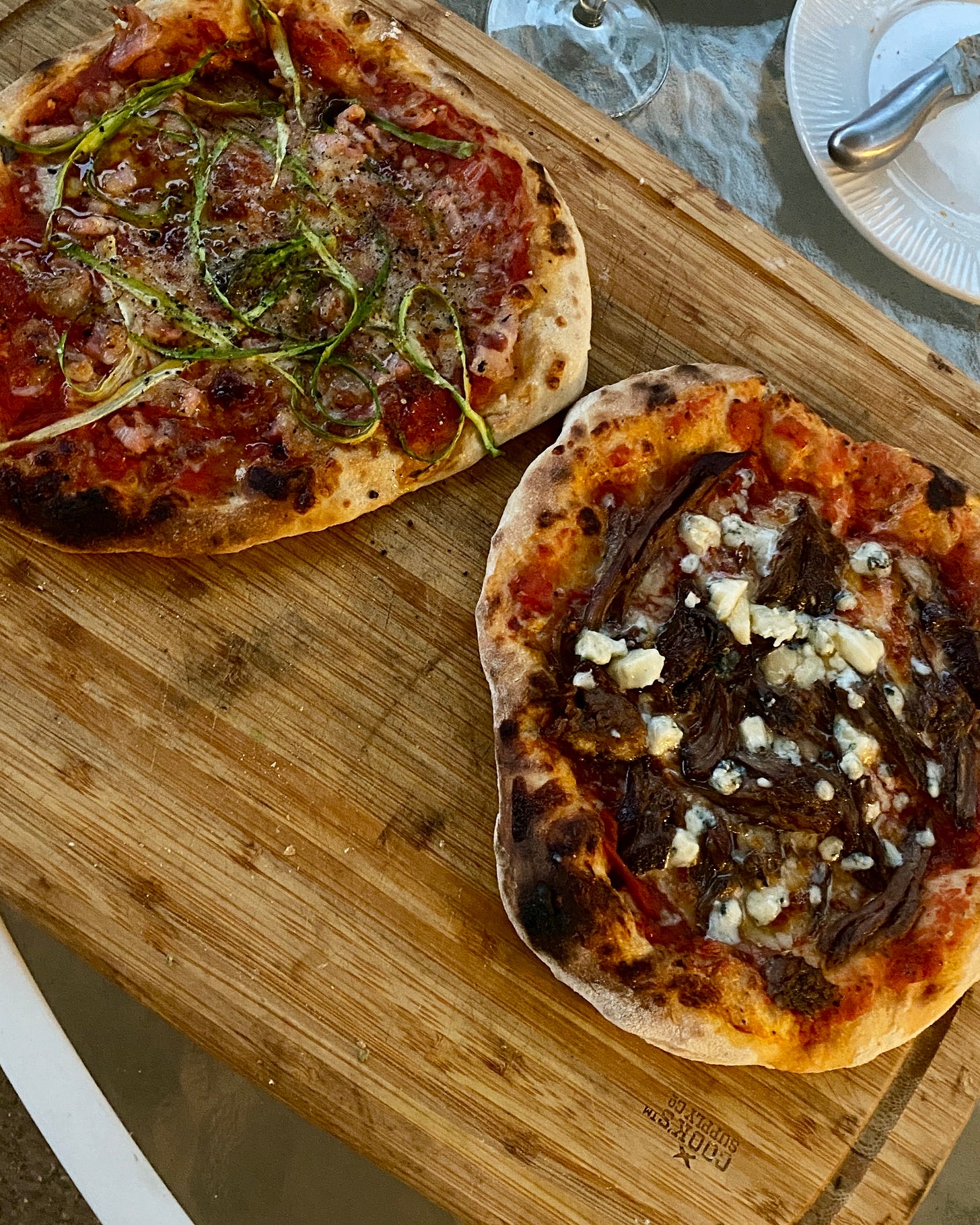The Ooni: A Review
Unboxing videos are one of the more confounding trends of our current moment. Product reviews are useful, of course, but unboxing videos seem less about critical evaluation and more about celebrating a world built around constant consumption and the addictive thrill of getting new shit delivered to your doorstep. If you want that, then great—go ahead and like and subscribe! But I want reviews by people who know a product intimately, who have mastered its intricacies and come to terms with its quirks. I want experiences, not impressions!
After almost two years of use, I feel like I have a pretty solid understanding of my backyard pizza oven, so here’s my review of the Ooni Karu 12 pizza oven! I’ll even lead with my conclusion: it’s great, and you don’t need it. Unless you are chasing a very specific pizza style—the Neapolitan pie—don’t buy it.
Before we get to the review, let’s talk pizza styles. Neapolitan pizza has the reputation of being the most authentic, the most artistic of pies. If you’re supposedly a serious pizza maker, maybe someone who self-identifies as a pizzaolo (good grief), then you make Neapolitan-style pizza. Tune in to Netflix’s painfully pretentious and beautfully filmed Chef’s Table: Pizza series and you’ll see Neapolitan-style pies in 5 of the 6 episodes. Wood fired ovens, wooden pizza paddles, sourced ingredients: this must be the apex of pizza cookery!
Well, maybe. Neapolitan-style pizza has all the hallmarks of culinary snobbery: it requires expensive equipment and advanced techniques. It looks imperfect, both rustic and cultivated. With its uneven browning and splotches of burnt crust, it photographs very well. And most importantly, of course: it isn’t available at your neighborhood Sgt. Pepper-oni’s Take-Out or Delivery.
A great Neapolitan-style pizza is an impressive achievement, but no more so than any other style of pizza that has been cared for and labored over. Perhaps the best pizza I’ve had in the past few years was a piece of Sicilian from a slice joint in Queens. At home, there’s absolutely no need to make Neapolitan-style pizza. In your basic kitchen oven with (maybe) a pizza stone thrown in, you can make great New York, Chicago Tavern, Detroit Thick, St. Louis Thin, Roman, Sicilian, Greek, Grandma, and Totino’s Party pizzas. Any one of those can be your signature house pie and give you years of joy exploring the intricacies of the style. All are simpler than a Neapolitan-style pizza, which requires a difficult to wrangle high-hydration dough, the skill to launch that dough from a paddle into an oven, and oven that uses fire to reach 800-degrees Fahrenheit.
You can’t make Neapolitan pizza in a basic oven. Without the fire and hight temps, your dough will fail to bubble up into an airy, light, and delicious crust. Ooni’s brilliance has been to turn what was a $3,000+ brick-oven built permanently into your home into a $300 metal box that you can take wherever. The Ooni doesn’t do much, but what it does, it does remarkably well. If, despite your more sober, more logical judgement, you are simply compelled to make Neapolitan-style pizza, the Ooni will get you there.
I have the 12” Karu, which cooks with wood chunks or charcoal and, if you buy the $100 adapter, propane. You can buy a propane exclusive (the Koda) or one that cooks with bbq pellets (the Frya), but I like the versatility of the Karu. Ooni sells a larger, 16-inch oven but this seems overkill if you’re making Neapolitan pizzas: good luck launching a sticky, 16” round into the thing. There’s a reason that restaurants that specialize in the Neapolitan style don’t sell large pizza. 12” is all the cooking space you need.
The Ooni is a pretty simple design: it’s a rectangular metal box with a concave roof. Its rear houses the flame and its front has a chimney. Between those lies a standard pizza stone like you buy for the regular oven. The real innovation is its stainless steel shell that houses a carbon fiber insulation. That super lightweight insulation does the work that bricks do in traditional wood-fired ovens, capturing and radiating heat, which allows the temps to rise high and fast.
The biggest surprise with the Karu was that switching cooking fuels transforms the cooking process. I started with propane, figuring that would be the easier fuel to learn the cooking method with. Propane simplifies the process: you turn on the gas, rotate the control to the autoignite, adjust the flame to high, and wait about 15 minutes until the center of the stone is at 750°F. A laser thermometer is key to nailing this. Launch the pizza, turn it after 45 seconds or so, give it a few more turns over the next minute or two to brown the crust fully, and, voila, a well-cooked Neapolitian-style pizza.
That probably sounds simple but it takes a good deal of trial and error to nail. For one, the dough is difficult to work with on its own. For that amazing, airy, bubbly crumb, you want a hydration rate of ~70%, which makes for a wet, sticky, and difficult to maneuver dough. To get that dough onto the peel, top with ingredients, move it to the Ooni, and launch it from the peel without having a spot of that dough stick to the peel and ruin the entire pizza is as tricky a task as you’ll find in cooking. You could use a less hydrated dough but then it wouldn’t be Neapolitan-style pizza and if you aren’t making Neapolitan-style pizza then why bother with the Ooni to begin with?
I spent nearly a year only using propane. That allowed me to develop a dough, work on technique, and generally master the cooking process (more or less). Then I tried wood. Well, lump charcoal to be exact, which has most of the benefits of wood but is easier to light and keep going. The cooking technique remained the same but the actual Ooni felt like an entirely different piece of equipment. With gas, the flame shoots out the back, follows the contour of the ceiling, and reaches out to the chimney. While the stone and walls get rip-roaring hot, the top of the pizza is cooked directly with the flame. This works well enough and if you only ever use an Ooni with propane, you can make some fine backyard pizzas.
The charcoal cook, though, transforms the Ooni into a proper wood-fired oven. The flame stays in the back and the coals become a stationary source of pure heat. The pizza cooks purely through radiated heat waves with the hottest heat coming from the rear rather than the roof. You have to monitor the flame more than the propane, especially if you’re cooking several pizzas at once—if the glowing mass of charcoal starts getting low, the pizza doesn’t cook as well—but this isn’t particularly difficult. I’ve never cooked in a traditional wood-fired oven before, but this feels like it must be close to that age-old experience. It simply feels right.
The pizza is also better. The crust gets more evenly toasted. The exterior hardens into a crispier exterior. There’s a slight smokiness that adds a tinge of flavor. If the propane Ooni creates a fine backyard pizza, the charcoal Ooni creates Neapolitan pizza on par with any restaurant I’ve had. It’s a joy.
So what are the drawbacks? None! Except you can pretty much only do one thing: make Neapolitan pizza. The temp of the Ooni is an all or nothing proposal, especially with propane. That means you can’t make other styles of pizza in it: New York style is cooked around 650°F, notably lower than the 800°F of the Ooni. The Ooni’s size is also an issue. Designed to efficiently heat up, the Ooni is too small for the things that traditional bread ovens get used for such as, well, baking bread, but also slow-cooking casseroles and braised meat dishes (something like the Gozney Dome might be more versatile in that regard). With the propane set-up, you could run the Ooni as a salamander or a steakhouse-style steak broiler but, at least as I’ve used it, the Ooni has been a fairly pricey unitasker. Like a Formula 1 car, it has one job to do and does it extraordinarily well.
Do you want to make Neapolitan-style pizza at home? Then get an Ooni. Should you make Neapolitan-style pizza at home? Probably not! But I have a blast with it.



